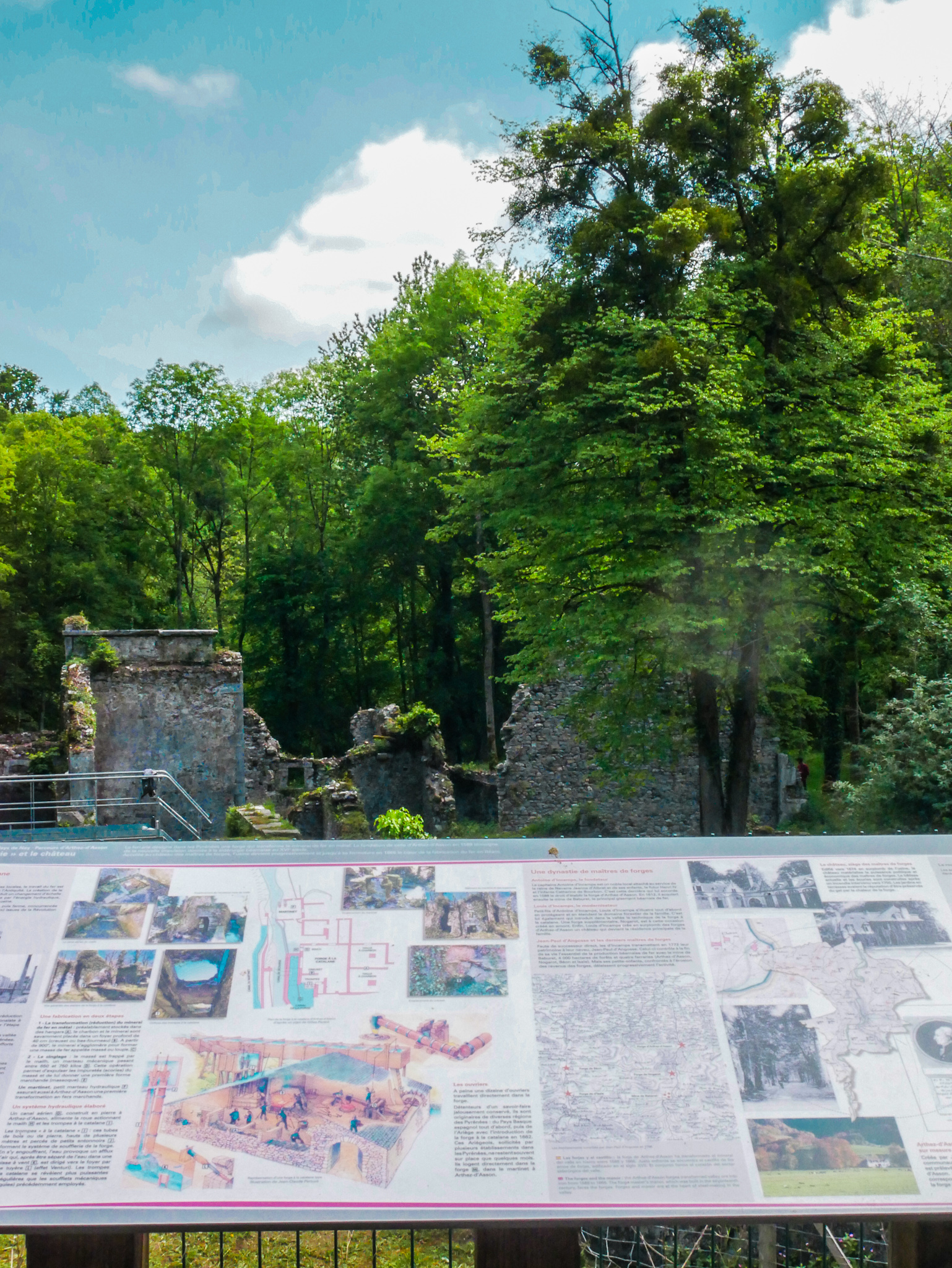In the heart of the Ouzom Valley, in the Aoûles district, you can discover the last vestige and symbol of an iron and steel industry introduced by the Catalans: the Angosse forge.
It is considered to be the standard-bearer of the technical and learned ingenuity of the 16th century, whose secret lay in the use of water to blow out the fire.
History and operation
From the 16th century onwards, the Louvie-Soubiron forge was established in the valley at the foot of the Baburet mines and reopened around 1512 (Cassini 1813), under the control of the Lord of Louvie. Other forges followed, such as the Milieu and Nogarot forges (Cassini 1813), which were located on the cadastral border of two seigneurial estates. Finally, the 4th and last documented forge is owned by the Lord of Incamps, known as "Saint-Paul" and "d'Angosse" (Cassini 1820) in Arthez d'Asson.
From an architectural point of view, the Pyrenean gorge that is the Ouzom Valley has an industrial character that is less marked by blast furnaces than the rest of France.
The forges used iron ore extracted from the Baburet mines in Louvie-Soubiron, directly accessible from the village of Ferrières, which had been known and exploited since Antiquity, mainly between 1512 and 1866, and then in the second half of the 20th century. After the 19th century, the forges known as "à la catalane" were characterised by a device in which the passage of water inside vertical tubes known as "trompes" drew in air, which was then separated from the water in a wind box. This pressurised air is blown into a nozzle and projected onto the embers of the fire. Once the iron has been extracted and transformed into bars, it is sent to small workshops known as "hammer mills", where small tools and hardware are made.
In the 19th century, the valley's forges died out when Emperor Napoleon III authorised the import of foreign ore. After they closed in the region, a number of companies tried to revive the industry, but without much success, as they were soon overtaken by the industrial blast furnaces that simultaneously smelted and deoxidised the ore. As a result, the mine disappeared, leaving only meagre remains, which can still be seen in the landscape.
Discovering the forge today

Today, curious visitors to Arthez d'Asson can discover a number of short walks, including a "panneauté" trail that retraces the stages in the founding of the village, spurred on by this major industry, and takes in the surroundings of this industrial site. The "Patrimoine en balade" (Heritage on a walk) application takes visitors on a more landscaped and contemporary stroll to discover the memory and skills of the local people.
The forge is part of the Route du Fer cultural itinerary in the Pyrenees, which brings together a range of partners who share the history of iron.
New: You can now take a virtual tour of this site using the "Fer(us) d'histoire" application, from your PC or smartphone (on Play Store and App Store). This device is an invitation to explore and discover the secrets of the exploitation of the natural resources that have shaped the history of this valley.